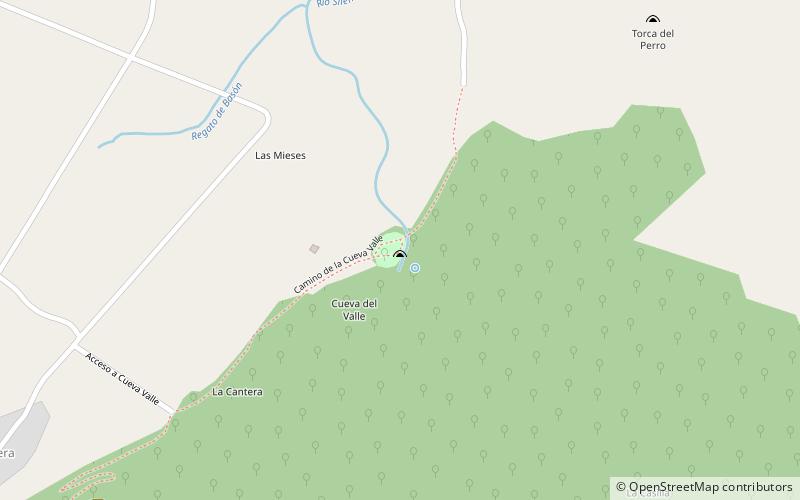Cueva del Valle


Facts and practical information
Nestled in the lush greenery of Cantabria, Spain, the Cueva del Valle is a prehistoric cave that offers a glimpse into the distant past. This underground marvel, located in the Valle municipality, is a significant archaeological site known for its impressive array of Paleolithic art.
The Cueva del Valle, with its sprawling chambers and narrow passages, has been a subject of fascination for archaeologists and historians alike. The cave walls are adorned with ancient paintings and engravings that date back to around 20,000 to 30,000 years ago. These artworks depict a variety of figures, including animals like bison, horses, and goats, which provide invaluable insights into the lives and surroundings of prehistoric humans.
The cave's interior is a treasure trove of geological formations. Stalactites and stalagmites rise and descend throughout the cavern, creating a natural cathedral of stone that has been sculpted over millennia. The play of light and shadow on these formations adds to the mysterious ambiance of the cave.
Visitors to Cueva del Valle can embark on guided tours to explore the depths of this ancient site. The tours are designed to educate participants about the historical and cultural significance of the cave paintings and the geological wonders within. It’s a journey that not only delves into the Earth’s geological past but also connects us to the earliest expressions of human creativity and belief.
Moreover, the cave is part of a larger network of prehistoric sites in the region, which collectively enhance our understanding of early human habitation in Europe. The Cueva del Valle stands as a testament to the enduring legacy of our ancestors and continues to be a site of scientific discovery and exploration.
Cueva del Valle – popular in the area (distance from the attraction)
Nearby attractions include: El Mirón Cave, Torca del Carlista, Cueva de Covalanas, Iglesia de Santa Marina.







